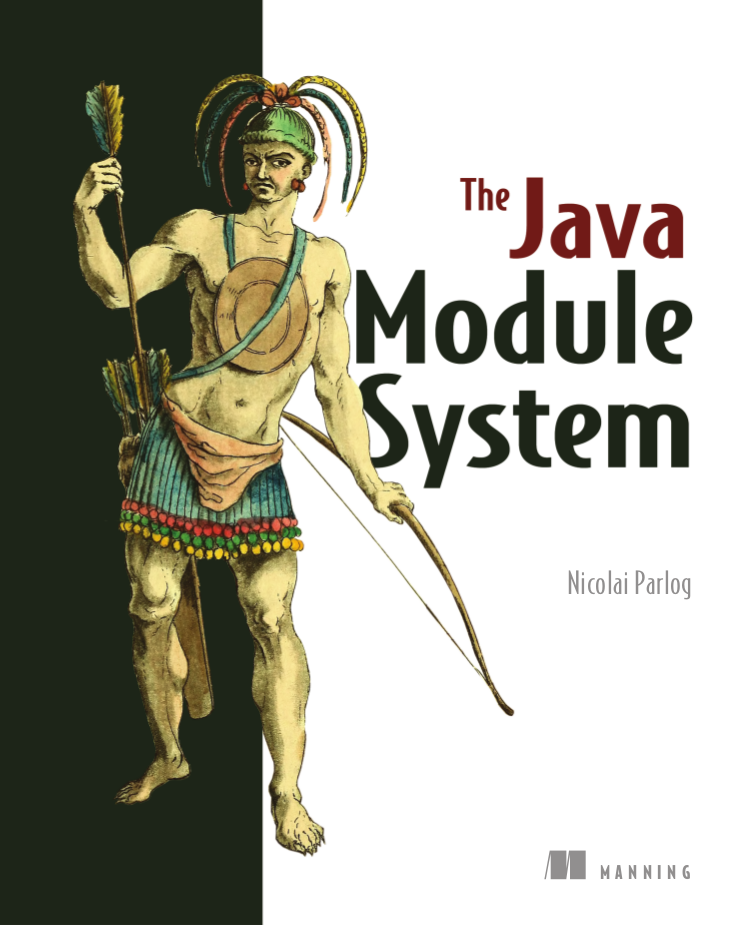public class PageTreeFactory {
public static Page loadPageTree(/*...*/) {
// [...]
}
}Data-Oriented Programming
In Java 19
Data-Oriented Programming
| What is DOP? |
| A Lengthy Example |
| That was DOP! |
Slides at slides.nipafx.dev.
Das Ist Alles Nur Geklaut 🎶
(This is all just snitched.)
Seminal article by Brian Goetz on InfoQ:
Data Oriented Programming in Java
Data-Oriented Programming
| What is DOP? |
| A Lengthy Example |
| That was DOP! |
Programming Paradigms
Paradigms often come with an
"Everything is a …" sentence.
The goal of any programming paradigm is to manage complexity.
complexity comes in many forms
not all paradigms handle all forms equally well
⇝ "It depends"
Object-Oriented Programming
Everything is an object
combines state and behavior
works best when defining/upholding boundaries
Great use cases:
boundaries between libraries and clients
in large programs to enable modular reasoning
Smaller programs/subsystems have less need for boundaries.
Data-Oriented Programming
Use Java’s strong typing to model data as data:
use classes to represent data, particularly:
data as data with records
alternatives with sealed classes
use methods (separately) to model behavior, particularly:
exhaustive
switchwithoutdefaultpattern matching to destructure polymorphic data
Guiding Principles
model the data, the whole data,
and nothing but the datadata is immutable
validate at the boundary
make illegal states unrepresentable
Data-Oriented Programming
| What is DOP? |
| A Lengthy Example |
| That was DOP! |
Crawling GitHub
Starting with a seed URL:
connect to URL
identify kind of page
identify interesting section
identify outgoing links
for each link, start at 1.
Crawling GitHub
That logic is implemented in:
What does Page look like?
Page Requirements
all pages have a
urlpages that couldn’t be resolved, have an
errorpages that could be resolved have
contentGitHub pages have:
outgoing
linksissueNumberorprNumber
Requirements
Operations on pages and their subtree:
pretty print
collect statistics
A Possible Implementation
A single Page class with this API:
public URL url();
public Exception error();
public String content();
public int issueNumber();
public int prNumber();
public Set<Page> links();
public Stream<Page> subtree();
public Stats evaluateStatistics();
public String printPageList();A Possible Implementation
Problems:
page "type" is implicit
legal combination of fields is unclear
clients must "divine" the type
disparate operations on same class
Applying DOP
Model the data, the whole data, and nothing but the data.
There are four kinds of pages:
error page
external page
GitHub issue page
GitHub PR page
⇝ Use four records to model them!
Modeling The Data
public record ErrorPage(
URI url, Exception ex) { }
public record ExternalPage(
URI url, String content) { }
public record GitHubIssuePage(
URI url, int issueNumber,
String content, Set<Page> links) { }
public record GitHubPrPage(
URI url, int prNumber,
String content, Set<Page> links) { }Applying DOP
Model the data, the whole data, and nothing but the data.
There are additional relations between them:
a page (load) is either successful or not
a successful page is either external or GitHub
a GitHub page is either for a PR or an issue
⇝ Use sealed types to model the alternatives!
Modeling Alternatives
public sealed interface Page
permits ErrorPage, SuccessfulPage {
URI url();
}
public sealed interface SuccessfulPage
extends Page permits ExternalPage, GitHubPage {
String content();
}
public sealed interface GitHubPage
extends SuccessfulPage
permits GitHubIssuePage, GitHubPrPage {
Set<Page> links();
default Stream<Page> subtree() { ... }
}Applying DOP
Make illegal states unrepresentable.
Many are already, e.g.:
with
errorand withcontentwith
issueNumberandprNumberwith
isseNumberorprNumber
but nolinks
Validation
Validate at the boundary.
⇝ Reject other illegal states in constructors.
public ExternalPage {
Objects.requireNonNull(url);
Objects.requireNonNull(content);
if (content.isBlank())
throw new IllegalArgumentException();
}Applying DOP
Data is immutable.
Records are shallowly immutable,
but field types may not be.
⇝ Fix that during construction.
public GitHubPrPage {
// [...]
links = Set.copyOf(links);
}Where Are We?
page "type" is explicit in Java’s type
only legal combination of fields are possible
API is more self-documenting
code is easier to test
But where did the operations go?
Operations On Data
Model the data, the whole data, and nothing but the data.
⇝ Operations should be limited to derived quantities.
public Stats evaluateStatistics();
public String printPageList();This actually applies to our operations.
But what if it didn’t? 😁
Operations On Data
Pattern matching on sealed types is perfect
to apply polymorphic operations to data!
And records eschew encapsulation,
so everything is accessible.
Printing A Page List
In class Pretty:
public static String printPageList(Page rootPage) {
if (!(rootPage instanceof GitHubPage ghPage))
return createPageName(rootPage);
return ghPage
.subtree()
.map(Pretty::createPageName)
.collect(joining("\n"));
}Printing A Page List
In class Pretty:
private static String createPageName(Page page) {
return switch (page) {
case ErrorPage err
-> "💥 ERROR: " + err.url().getHost();
case ExternalPage ext
-> "💤 EXTERNAL: " + ext.url().getHost();
case GitHubIssuePage issue
-> "🐈 ISSUE #" + issue.issueNumber();
case GitHubPrPage pr
-> "🐙 PR #" + pr.prNumber();
};
}Gathering Statistics
In class Statistician:
public static Stats evaluate(Page rootPage) {
Statistician statistician = new Statistician();
statistician.evaluateTree(rootPage);
return statistician.result();
}
private void evaluateTree(Page page) {
if (page instanceof GitHubPage ghPage)
ghPage.subtree().forEach(this::evaluatePage);
else
evaluatePage(page);
}Gathering Statistics
In class Statistician:
private void evaluatePage(Page page) {
// `numberOf...` are fields
switch (page) {
case ErrorPage __ -> numberOfErrors++;
case ExternalPage __ -> numberOfExternalLinks++;
case GitHubIssuePage __ -> numberOfIssues++;
case GitHubPrPage __ -> numberOfPrs++;
}
}Operations On Data
Yes, switching over types is icky.
But switching over sealed types is safe.
What happens when we add:
public record GitHubCommitPage(
URI url, String hash,
String content, Set<Page> links)
implements GitHubPage {
// [...]
}Follow the compile errors!
Extending Operations On Data
First stop: the sealed supertype.
⇝ Permit the new subtype!
public sealed interface GitHubPage
extends SuccessfulPage
permits GitHubIssuePage, GitHubPrPage,
GitHubCommitPage {
// [...]
}Extending Operations On Data
Next stop: all switch without default.
⇝ Handle the new subtype!
switch (page) {
case ErrorPage __ -> numberOfErrors++;
case ExternalPage __ -> numberOfExternalLinks++;
case GitHubIssuePage __ -> numberOfIssues++;
case GitHubPrPage __ -> numberOfPrs++;
case GitHubCommitPage __ -> numberOfCommits++;
}Where Are We?
operations separate from data
adding new operations is easy
adding new data types is more work,
but supported by the compiler
⇝ Like the visitor pattern, but less painful.
Data-Oriented Programming
| What is DOP? |
| A Lengthy Example |
| That was DOP! |
Algebraic Data-Types
records are product types
sealed types are sum types
This simple combination of mechanisms — aggregation and choice — is deceptively powerful
Applications
ad-hoc data structures
complex return types
complex domains
Ad-hoc Data Structures
Often local, throw-away types used in one class or package.
record PageWithLinks(Page page, Set<URI> links) {
PageWithLinks {
requireNonNull(page);
requireNonNull(links);
links = new HashSet<>(links);
}
public PageWithLinks(Page page) {
this(page, Set.of());
}
}Complex Return Types
Return values that are deconstructed immediately:
sealed interface MatchResult<T> {
record NoMatch<T>() implements MatchResult<T> { }
record ExactMatch<T>(T entity)
implements MatchResult<T> { }
record FuzzyMatches<T>(
Collection<FuzzyMatch<T>> entities)
implements MatchResult<T> { }
record FuzzyMatch<T>(T entity, int distance) { }
}
MatchResult<User> findUser(String userName) { ... }Complex Domains
Long-living objects that are part
of the program’s domain.
For example Page.
Functional Programming?!
immutable data structures
methods (functions?) that operate on them
Isn’t this just functional programming?!
Kind of.
FP vs DOP
Functional programming:
Everything is a function
⇝ Focus on creating and composing functions.
Data-oriented programming:
Model data as data.
⇝ Focus on correctly modeling the data.
OOP vs DOP
OOP is not dead (again):
valuable for complex entities
or rich librariesuse whenever encapsulation is needed
still a good default on high level
DOP — consider when:
handling outside data (like JSON)
working with simple or ad-hoc data
data and behavior should be separated
Guiding Principles
model the data, the whole data,
and nothing but the datadata is immutable
validate at the boundary
make illegal states unrepresentable
So long…
More
Slides at slides.nipafx.dev⇜ Get my book!
Follow Nicolai
nipafx.dev/nipafx
Follow Java
inside.java // dev.java/java // /openjdk



